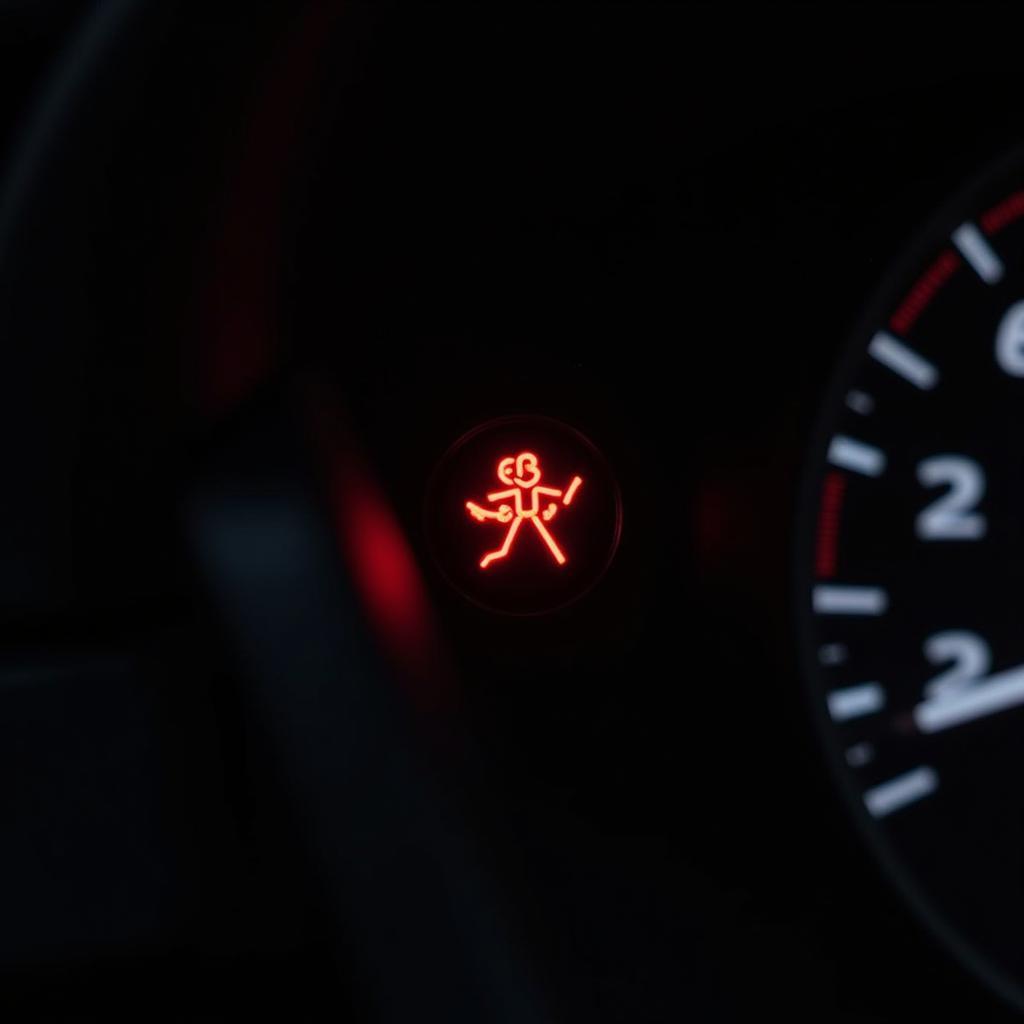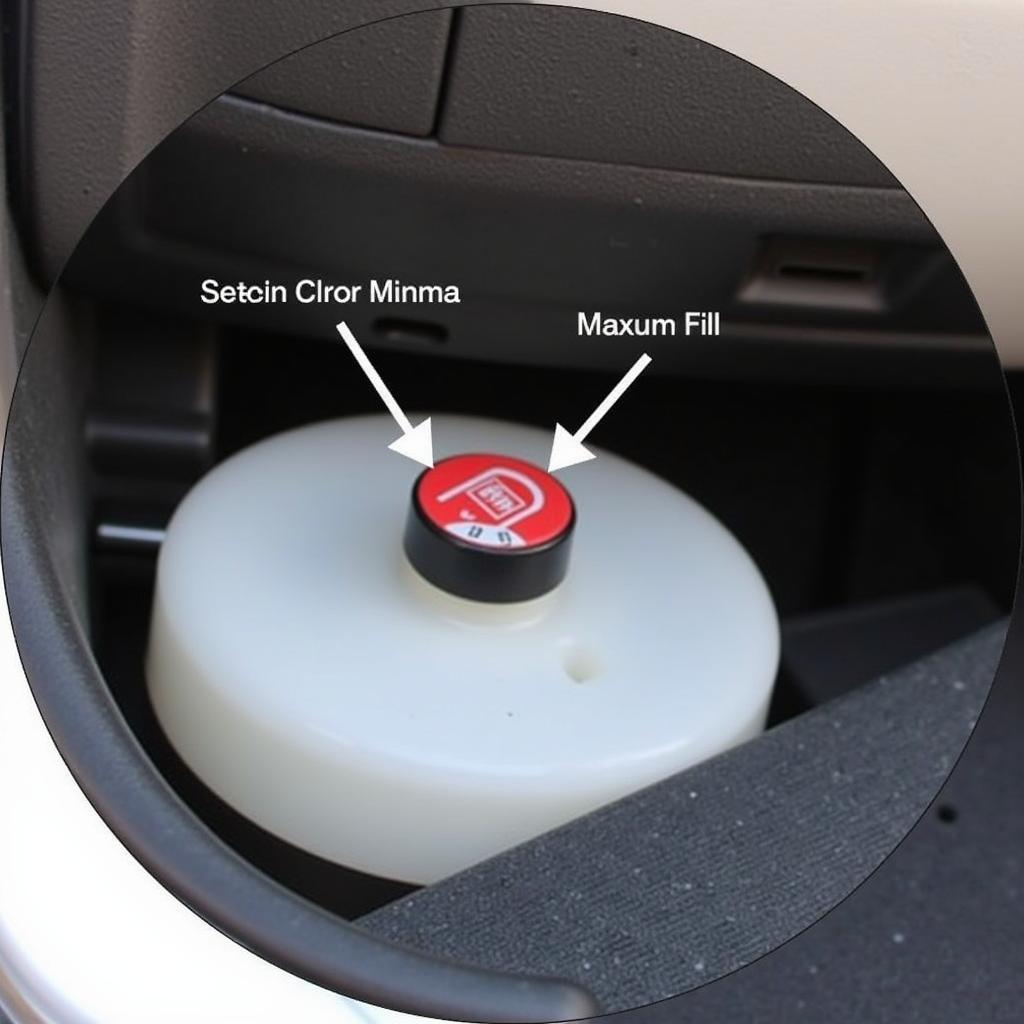The hand brake warning light on your dashboard is an important safety feature that lets you know when your parking brake is engaged. While it may seem obvious, a glowing hand brake light can indicate more than just an active parking brake. This comprehensive guide will delve into the various reasons behind a lit hand brake warning light, explain what they mean, and provide actionable solutions to get you back on the road safely.
 Handbrake warning light illuminated on a car dashboard
Handbrake warning light illuminated on a car dashboard
Common Causes of a Hand Brake Warning Light
1. Engaged Parking Brake
The most common and straightforward reason for the hand brake warning light to illuminate is that the parking brake is not fully released. It’s easy to forget to disengage the handbrake, especially if you are used to driving automatic cars.
Solution:
Ensure the parking brake is fully released before driving. Check your car manufacturer’s guidelines for the correct way to release your specific handbrake.
2. Low Brake Fluid Level
The hand brake warning light is often linked to the brake fluid level sensor. If your brake fluid is low, the light may turn on as a warning. Low brake fluid can significantly reduce braking power and is a serious safety concern.
Solution:
Check your brake fluid reservoir. If the level is low, carefully add the correct brake fluid for your car model. If you’re uncomfortable doing this yourself, it’s recommended to have a mechanic check it out.
3. Worn Brake Pads
While most modern cars have separate warning lights for worn brake pads, some vehicles might use the hand brake warning light to signal this issue.
Solution:
If your brake pads are worn, it’s crucial to have them replaced as soon as possible. Driving with worn brake pads can lead to reduced braking efficiency and potential damage to your brake rotors.
4. Faulty Brake Fluid Level Sensor
Like any sensor, the brake fluid level sensor can malfunction and send a false signal, causing the hand brake warning light to illuminate even when the brake fluid level is sufficient.
Solution:
Diagnosing a faulty sensor requires some mechanical knowledge. If you suspect this to be the problem, it’s best to take your car to a qualified mechanic or a trusted dealership to have the sensor checked and replaced if necessary.
5. Electrical Issues
Sometimes, a short circuit, loose wiring, or a blown fuse in the handbrake or brake fluid sensor circuit can cause the warning light to turn on erratically.
Solution:
Troubleshooting electrical problems requires specific tools and expertise. It’s highly recommended to seek help from a qualified auto electrician to diagnose and repair any electrical issues with your vehicle.
How to Reset the Hand Brake Warning Light
In many cases, simply addressing the underlying issue, such as releasing the parking brake or refilling the brake fluid, will automatically reset the warning light. However, if the light remains on even after fixing the problem, you may need to manually reset it. This often involves using an OBD-II scanner to clear the error codes from your car’s computer system.
“It’s crucial to remember that resetting the hand brake warning light without addressing the root cause is like ignoring a fire alarm – you’re just silencing the warning without putting out the fire,” says John Smith, a senior automotive engineer at XYZ Automotives. “Always investigate and fix the underlying problem before resetting the light.”
FAQs
1. Can I drive with the hand brake warning light on?
It is not advisable to drive with the handbrake warning light on. It indicates a potential issue with your braking system, which could compromise your safety.
2. How can I tell if my brake fluid is low?
Locate the brake fluid reservoir under the hood of your car. It will have a “MIN” and “MAX” marking. If the fluid level is below the “MIN” mark, it’s too low.
3. How often should I check my brake fluid?
It’s good practice to check your brake fluid level at least once a month and top it off if needed.
4. Can I use any brake fluid for my car?
No, using the incorrect type of brake fluid can damage your braking system. Refer to your owner’s manual for the recommended brake fluid type for your specific car model.
5. How long can I drive with worn brake pads?
Driving with worn brake pads is dangerous. If you suspect your brake pads are worn, have them inspected and replaced immediately.
Conclusion
A glowing hand brake warning light shouldn’t be ignored. By understanding the common causes and their solutions, you can address the issue promptly and ensure your safety on the road. However, if you are ever unsure about diagnosing or fixing the problem yourself, it’s always best to err on the side of caution and seek help from a qualified mechanic. Remember, a well-maintained car is a safe car.

